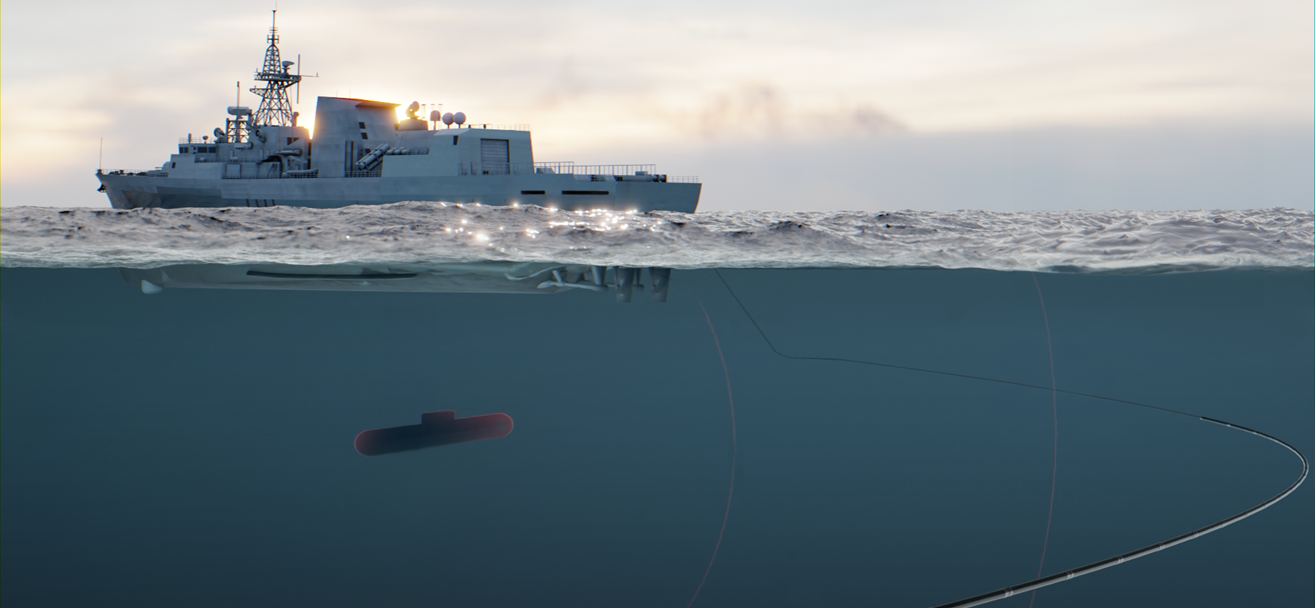Ocean surveillance is the perfect fusion of being simultaneously complicated and dynamic. In a world where camera use is prevalent, we must leverage our understanding of sound to capture the underwater picture. In today’s antagonistic seas where the Rules Based International Order is regularly challenged, more sound makes for louder underwater soundscapes – the perfect hiding places for bad actors to remain silent and undetected.
The underwater domain is vast and threats lurk from periscope depth to several hundred meters below. Anti-Submarine Warfare (ASW) plays a key role in maintaining the freedom of the seas. Successful ASW operations involve the ability to find, track, and take action against those underwater threats with precision and efficiency. Sonar technology is evolving and as submarines get quieter and oceans get louder, it is all the more critical that our surface fleet is mission ready. Acoustic systems need to be able to cut through the noise and detect the quietest notes within the ocean’s chorus that matter most. Canada has been a leader in ASW missions around the world for decades. The Royal Canadian Navy (RCN) continues to invest in Canadian technology and innovation to keep pace with evolving underwater threats.
General Dynamics Mission Systems–Canada has been supporting the RCN for over 75 years. Having been deployed on numerous expeditions, our underwater warfare solutions find submarines better than anyone else. We are proud to have worked alongside Defence Research and Development Canada (DRDC) and acoustics operators to develop a made-in-Canada sonar solution – including sensors in the water and the computing power behind them – that keeps Canada in the ASW race.
With the complexity of the current political environment, it is even more critical that Canada’s fleet remains operationally ready, and most notably under the water, during system updates to keep pace with modern mission requirements. Our rapid retrofit installation on the existing Halifax Class Frigates means Canada’s fleet can function at full speed – with improved performance – faster. In the latest phase of upgrades, a new Towed Low Frequency Active Passive Sonar (TLFAS) capability has been installed on HMCS Ville de Québec with enhanced processing and display systems. Strengthened by both passive and low-frequency active sonar technology for the first time in RCN surface fleet history, the UWSU TLFAS enables the RCN to find quieter submarines from further away. With distance and time on their side, Canada’s Navy can make better-informed decisions when it matters most, keeping our sailors safe.
This new TLFAS system is one element of our suite of upgraded sonar systems including new hull-mounted sonars, sonobuoy processing systems, bathythermograph recorders, an Underwater Data Management System (UDMS,) and operator workstations. These components, chosen from proven, in-service products, have been assembled into an integrated solution uniquely customized to Canada’s requirements. Combining advanced signal processing, innovative displays and tools, and sophisticated tracking, classification, and data fusion, this solution will arm Canada’s surface fleet with a consolidated subsurface picture.





